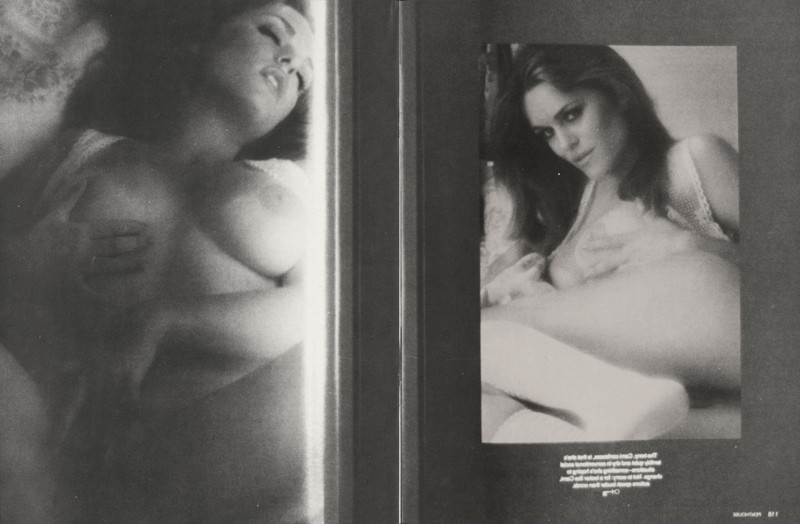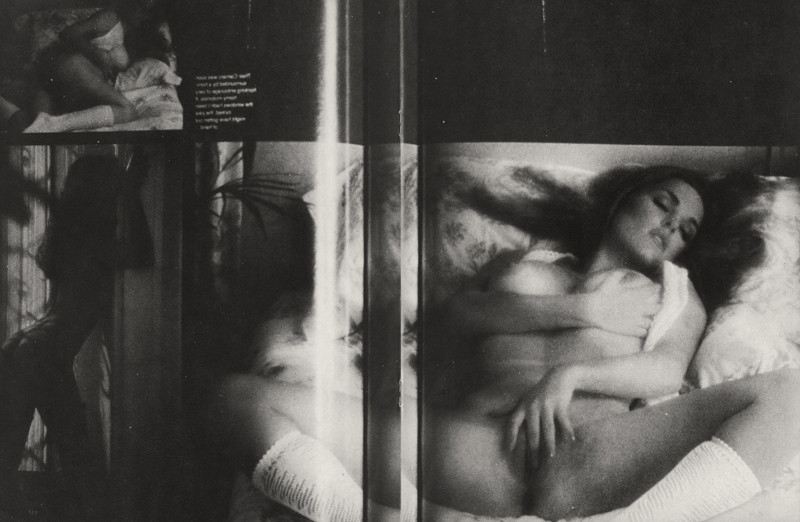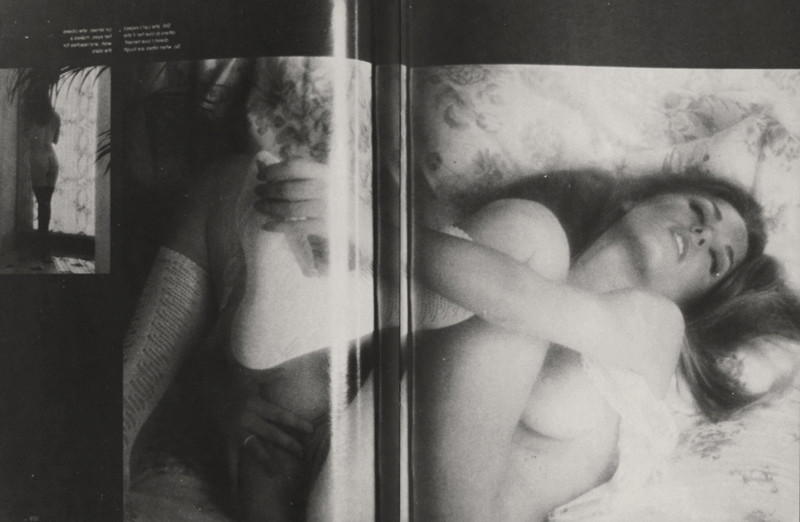[Fall 2009]
by Martha Langford
Michael Snow’s Repeat Offender (1986) is a magazine work that was commissioned by Photo Communique for an issue guest-edited by Elke Town on the interlocking themes of mass mediation and appropriation. Town’s introduction casts the common denominator – the mechanically reproduced photograph – as a readymade taken up by critical practice. Hers is an earnest Duchampian bride, stripped bare of irony. The magazine featured work by artists Ian Wallace, David Buchan, Snow, Liz Magor, and Keith Smith – each in its way edgy, and even controversial, in its choice of topics and images. Snow’s Repeat Offender was the middle child of this family of resemblance – the centrefold – and like all middles, overdetermined by association and correspondingly circumspect.
Repeat Offender is Snow’s short history of photography as a closed system of dualities: “Projection, mirroring, masturbation, silence, exhibitionism, voyeurism, fetishism” as “concentrated … in erotic photography.”
To make Repeat Offender, Snow photographed a Penthouse centrefold of the same title, taken by John Copeland of eighteen-year-old model Cami O’Connor. This information is preserved in the work, though encrypted by Snow’s process, which reverses each of the four spreads and eliminates the colour, substituting a veil of graininess and imperfect focus because of the “centrefold roll.” When his work is held up to a mirror, the text yields. It transpires that Cami, rather than the artist or the spectator, is the original “repeat offender,” being in the grip of autoeroticism, or, as the Penthouse poet puts it, “reaching for the stars.” Some of Copeland’s photographs are formally voyeuristic, in that the subject poses as unaware, while in others, Cami meets the mechanical eye in frank avowal of her pleasure and self-possession. Her mercenary playacting might amuse some viewers. Others, such as Snow, find it compelling.
Snow’s Repeat Offender is not, however, an homage to the model, but a photographic memory of an object, a Penthouse centrefold. The photographic treatment is straight, without irony or auto-criticism. In 1986, the work was purely intended to be contemplated as a work of art – a black-and-white abstraction of the original. That it also pushed the hot but- ton of Ontario’s censorship laws was incidental to the maker. Snow’s stand on censorship is well known – fought in the courts and articulated (cheekily) in his silent film So Is This (1982). Still, he is not a social artist. Town, for her part, showed gumption for inserting the work into a broader discussion of the gaze – a provocation to sexual, social, racial, psychological, and intellectual politics of the day, and a climactic moment in Canadian cultural studies. Looking at Repeat Offender today, mindful of the stacks of Penthouse magazines on Snow’s office floor, and of the frankly appreciative studies of the female figure throughout his oeuvre, Snow’s pleasure in research can be grasped. He enjoys representations of women. But this work depends on the objectification of the magazine itself, whose physical characteristics, as manifest on a copy stand, are preserved. Repeat Offender is Snow’s short history of photography as a closed system of dualities: “Projection, mirroring, masturbation, silence, exhibitionism, voyeurism, fetishism” as “concentrated… in erotic photography.”1 This history continues in a recent work titled La revue (2006), framing the four Photo Communique spreads so that the “centrefold roll” is recreated and underscored by the sensuous swelling shape of the framing enclosure. Form follows function.
Michael Snow, one of the best-known Canadian artists on the international scene, began his career in Toronto in the 1950s. A multidisciplinary artist, he is a painter, musician, and sculptor, though he is better known for his film and photographic production, through which he explores temporality and space. His works are in the collections of most major museums, including the Museum of Modern Art in New York, the Centre Georges Pompidou in Paris, the Ludwig Museum in Cologne and Vienna, and the National Gallery of Canada. Snow received the Governor General’s Award for Visual and Media Arts in 2000 for his films. He is a member of the Order of Canada and a Knight of the Order of Arts and Letters in France.
Martha Langford is the author of Suspended Conversations: The Afterlife of Memory in Photographic Albums (2001) and Scissors, Paper, Stone: Expressions of Memory in Photographic Art (2007), both published by McGill-Queen’s University Press. She is an associate professor and Concordia University Research Chair in Art History.




